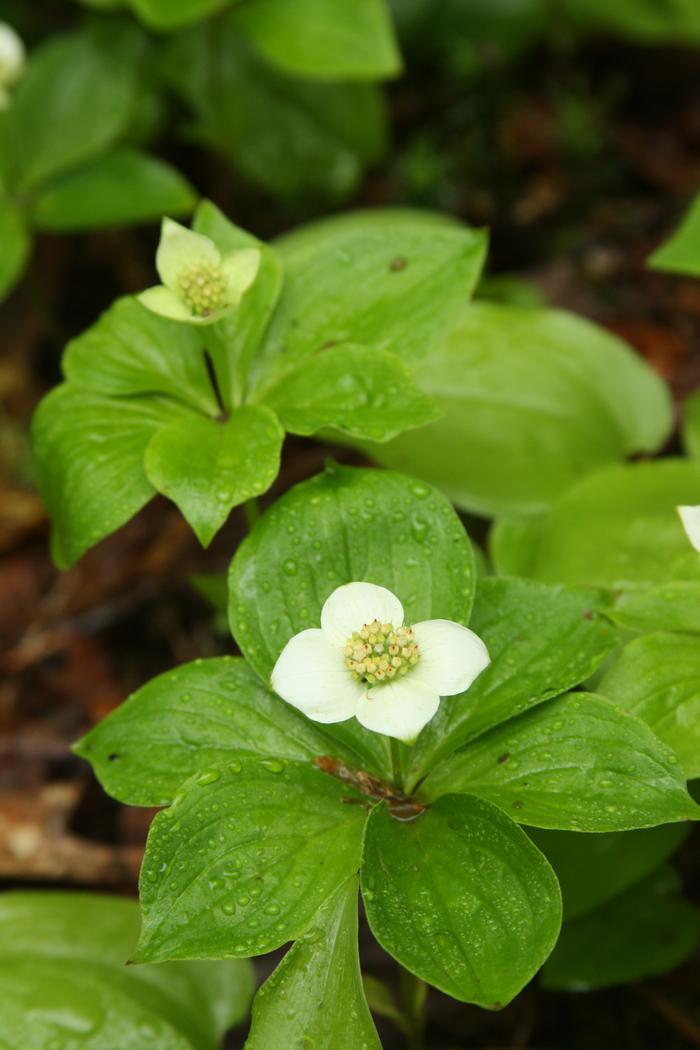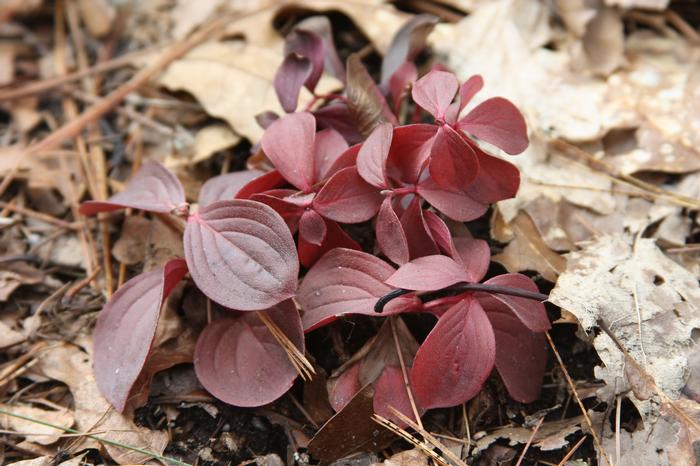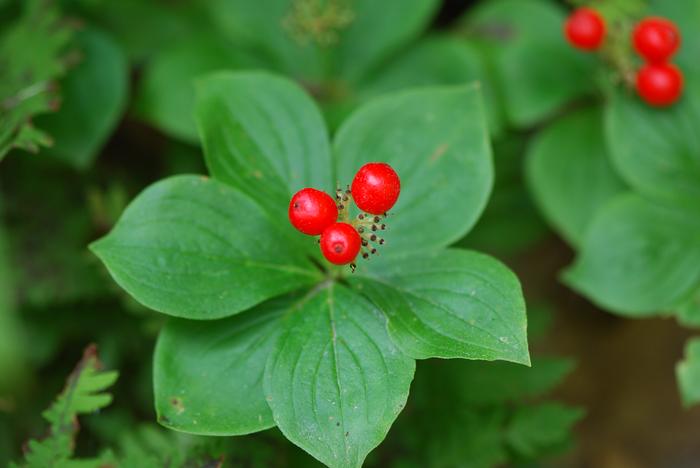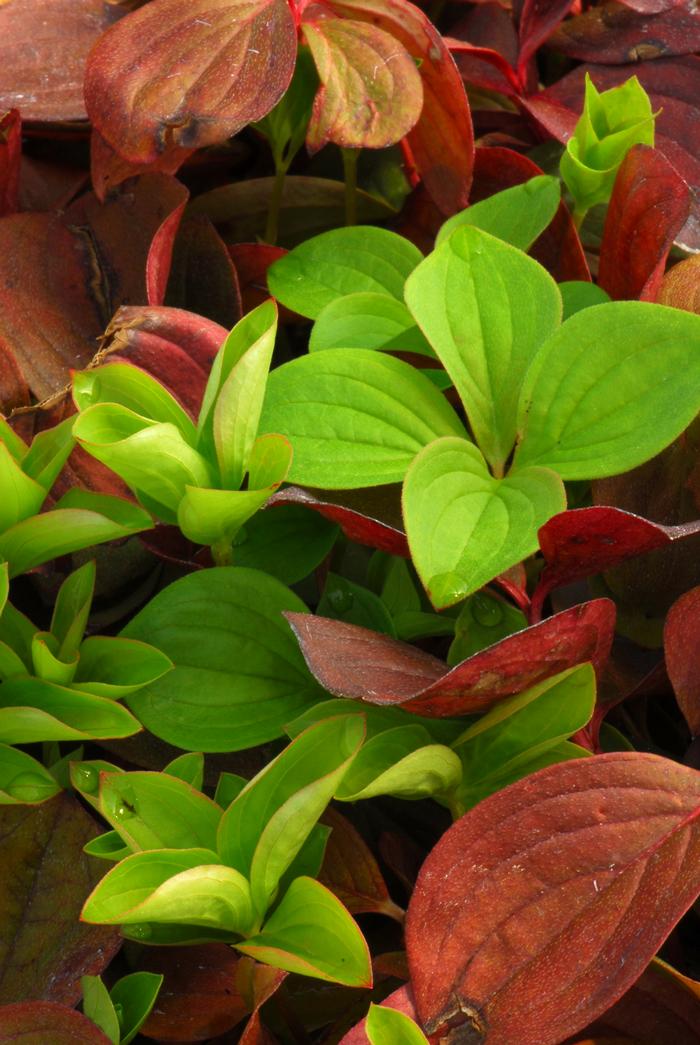General Description
Bloom Description: Small clustered green and white stalked flowers in the middle of four white bracts that resemble flower petals. Flowers are followed by cluster of bright red berries that can last into the fall. Blooms in late spring into early summer (May-June), but cold temperatures may delay the bloom time.
Growth Habit & Shape: Bunchberry is a short, showy ground cover that can form colonies by rhizome when sited properly. It has the potential to grow long distances horizontally.
Soil Preferences: C. canadense thrives in organically rich, acidic soils. It can tolerate a range of soil and light conditions., but will die in standing water.
Root Description: Bunchberry has rhizomatous roots that can grow about 1.5-6 inches deep and slowly spreads to form lovely colonies.
Garden Uses: A good groundcover under mid-height woody plants, woodland gardens, open shade gardens, alpine gardens, and natural areas.
Best Management & Maintenance: Mulching with peat moss or pine needles will encourage growth. Bunchberry grows best in low light conditions. They do well under mid-height woody plants. Keep this plant well watered while it establishes.
Common Problems: They may struggle to grow and spread in warmer soils and can be difficult to establish, especially in southern New England.
Benefits
Ornamental Value: C. canadense has stunning red foliage in the fall. It can be planted in a single species sweep or interplanted with other groundcovers. Resistant to dogwood anthracnose.
Wildlife Benefits: Provides nectar and pollen for a wide variety of bees, wasps, ants, flies, butterflies, and beetles. Long horned beetles are a frequent visitors. Large mammals, including deer and moose, will sometimes eat the foliage, although it is not a preferred food source. Fruits are prized by small mammals and birds, including chipmunks, martens, vireos, and ruffed grouse.
Other Practical/Environmental Benefits: Deer and rabbit tolerant (they will eat foliage if it is the only food source available).
Use in place of: Non-native ground covers- vinca, ivy, yellow archangel.
Ecology
Habitat:
Coniferous forests, deciduous and mixed forests, alpine communities, peat swamps, and streams/rivers edge.
Response to Disturbance: Bunchberry is more resilient to disturbance in the northern part of its range where it grows more rigorously.
Native State Distributions:
Canada: AB, BC, LB, MB, NB, NF, NS, NT, NU, ON, PE, QC, SK, YT
USA: AK, CO, CT, IA, ID, IL, IN, MA, MD, ME, MI, MN, MT, ND, NH, NJ, NM, NY, OH, PA, RI, SD, VA, VT, WA, WI, WV, WY
Wetland indicator status: FAC
Companion Plants:
Blueberries (Vaccinium spp.), bog labrador tea (Ledum growenlandicum), partridgeberry (Mitchella repens), three-leaved goldthread (Coptis trifolia), cinnamon fern (Osmundastrum cinnamomeum)
References
Return to Top




